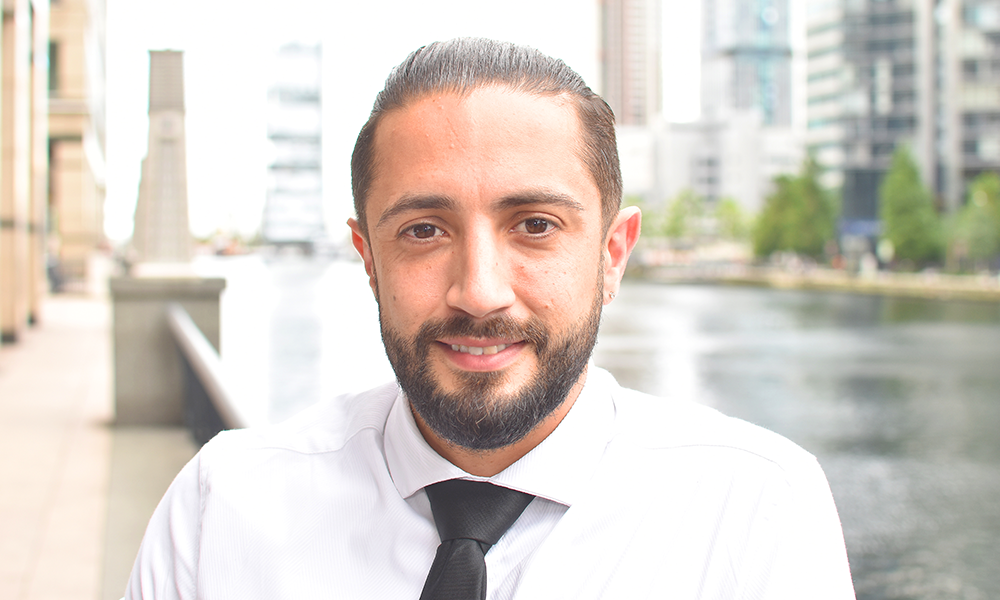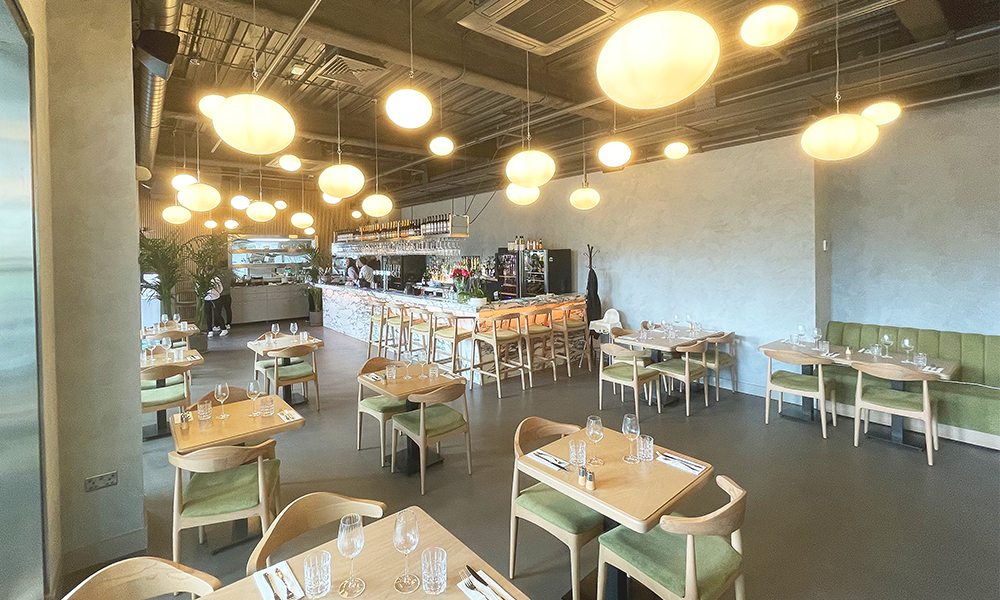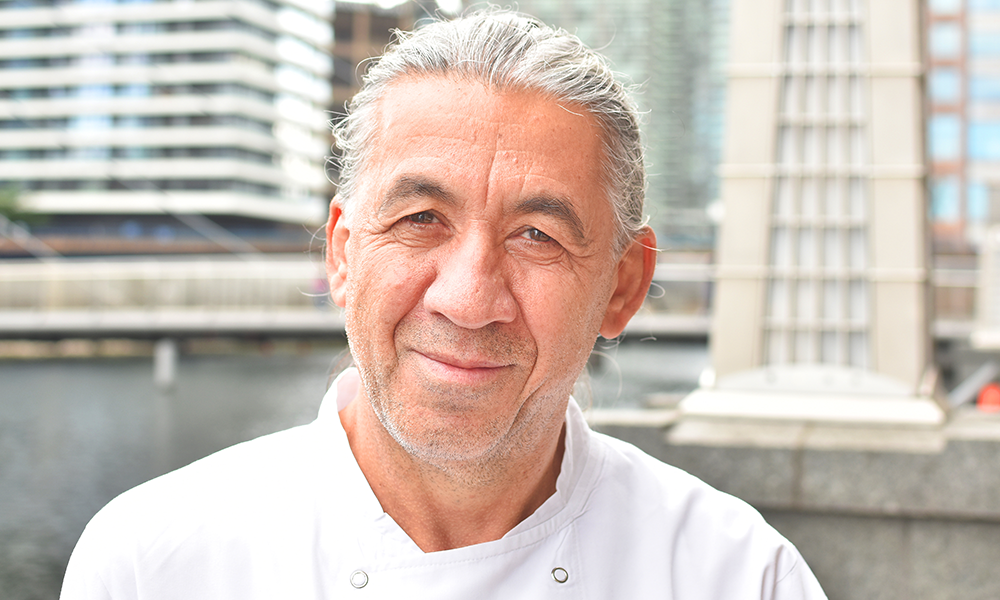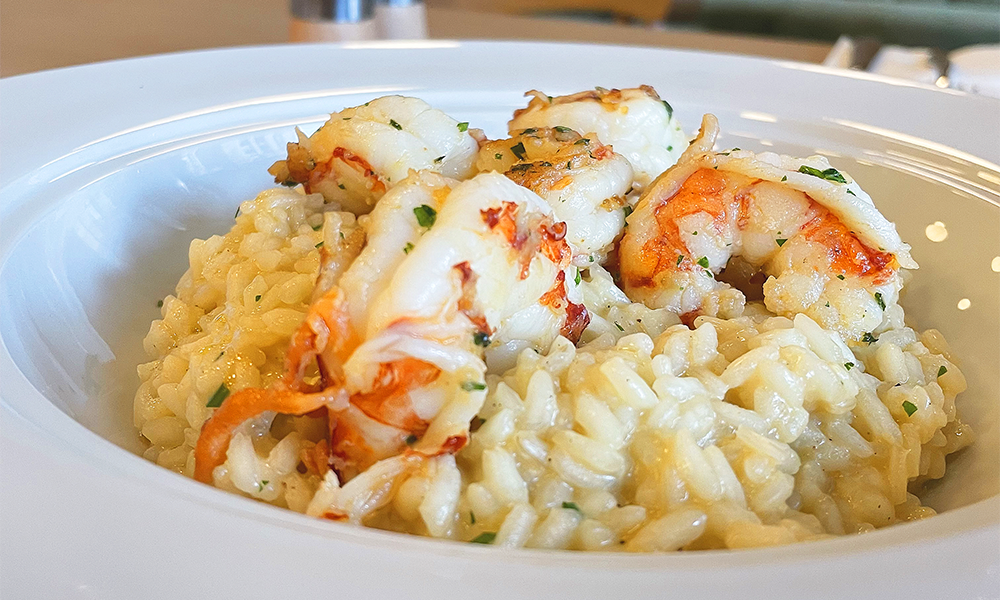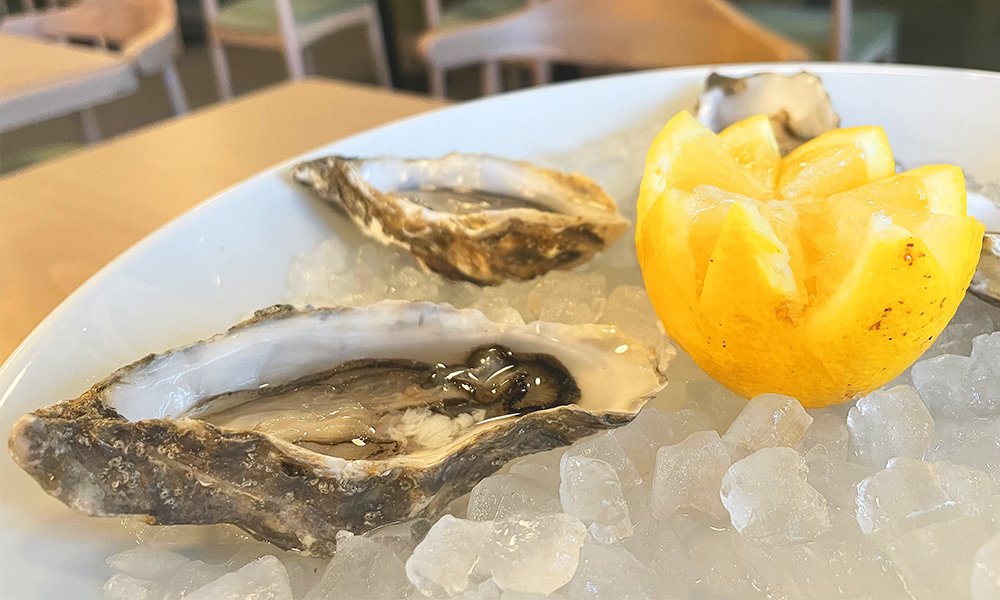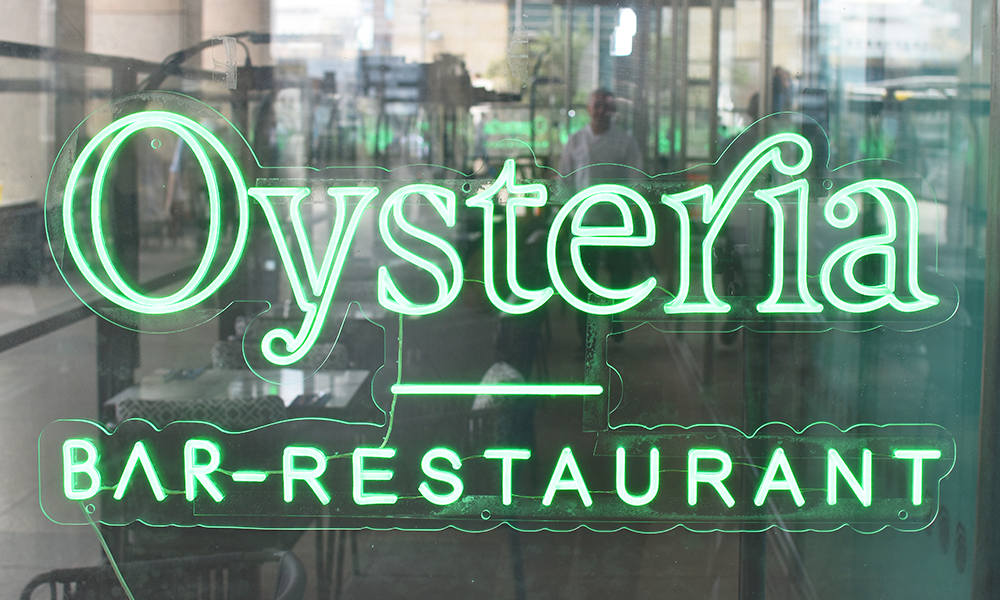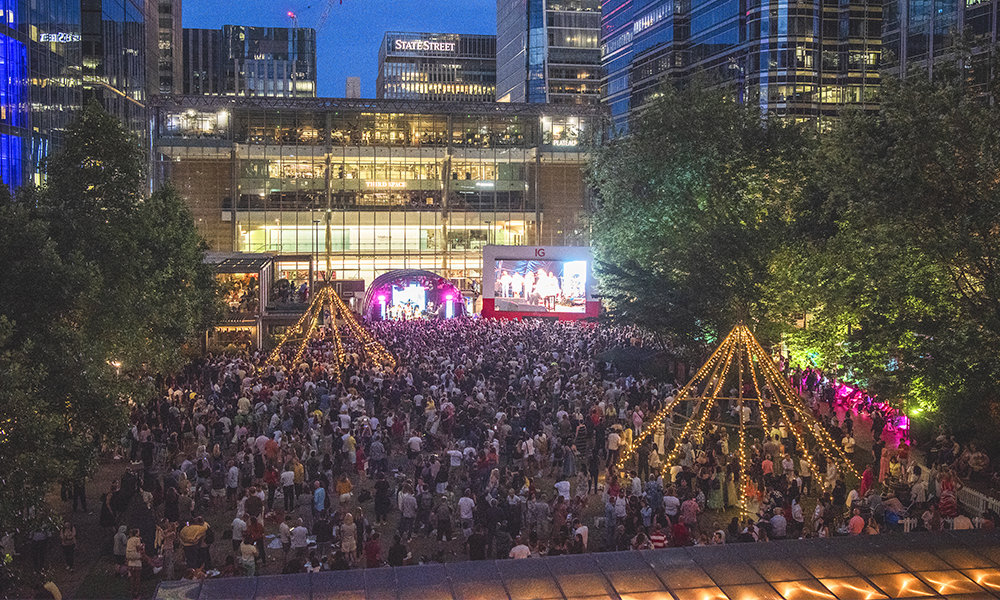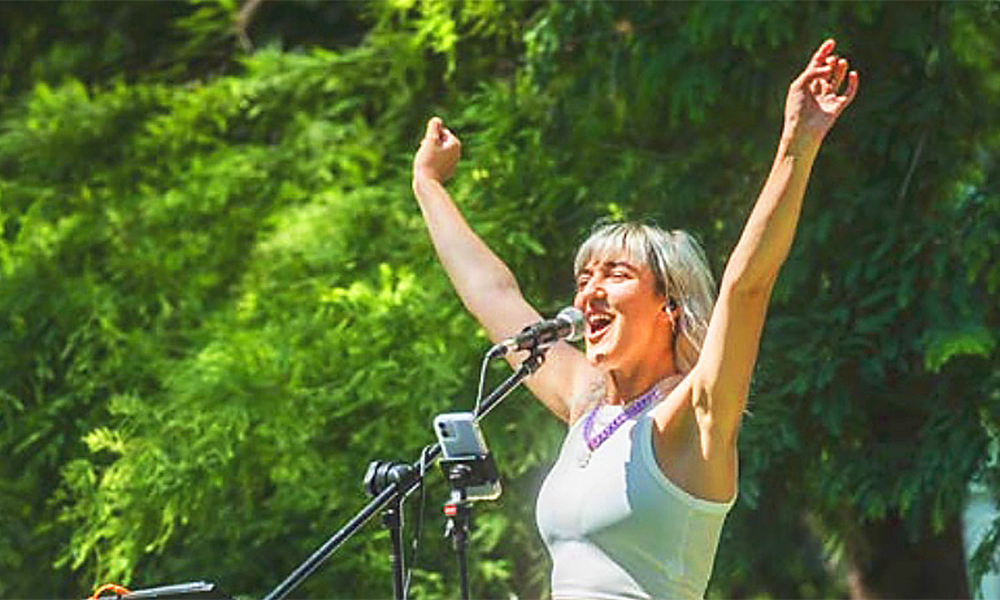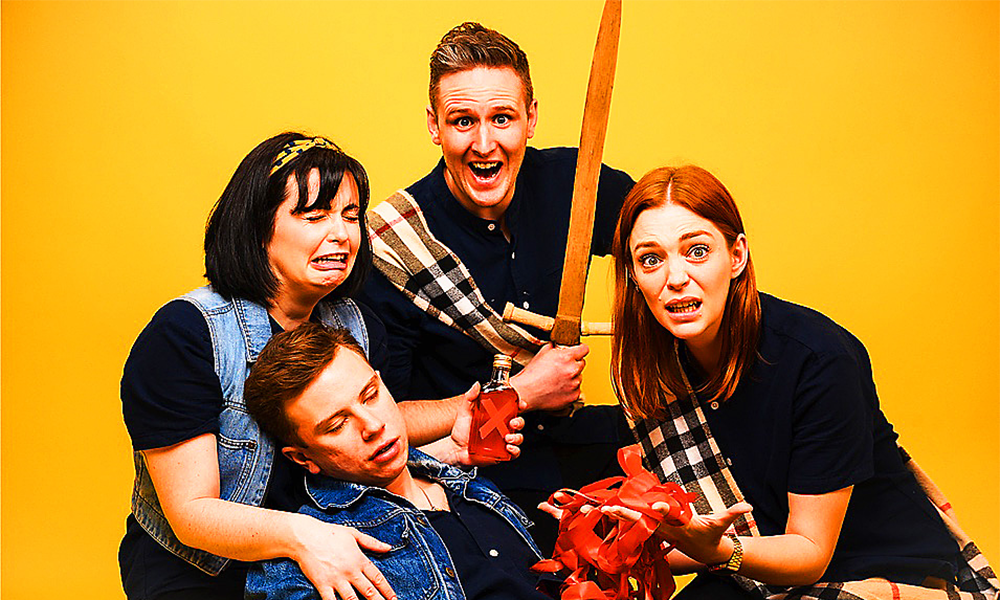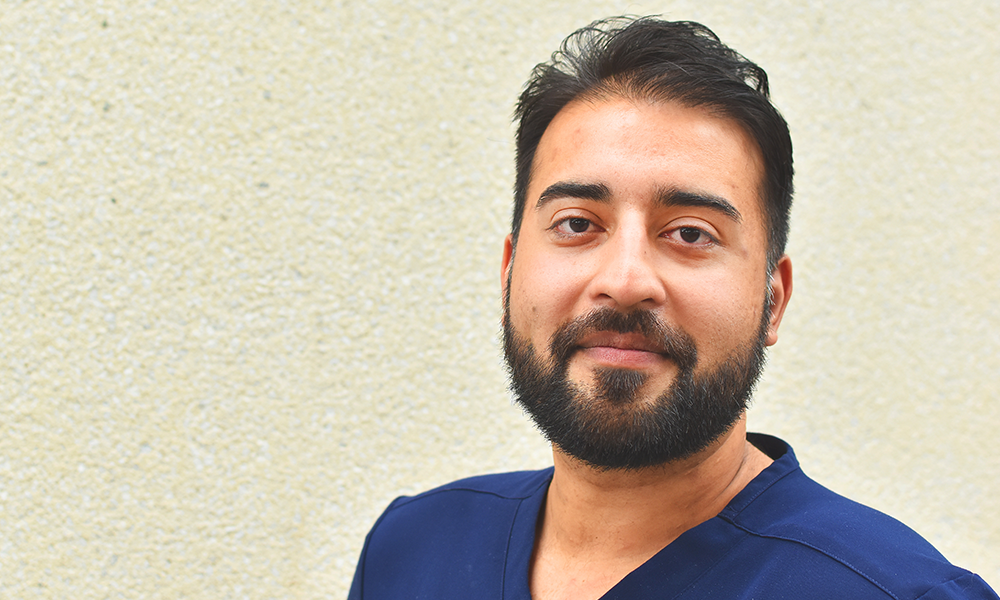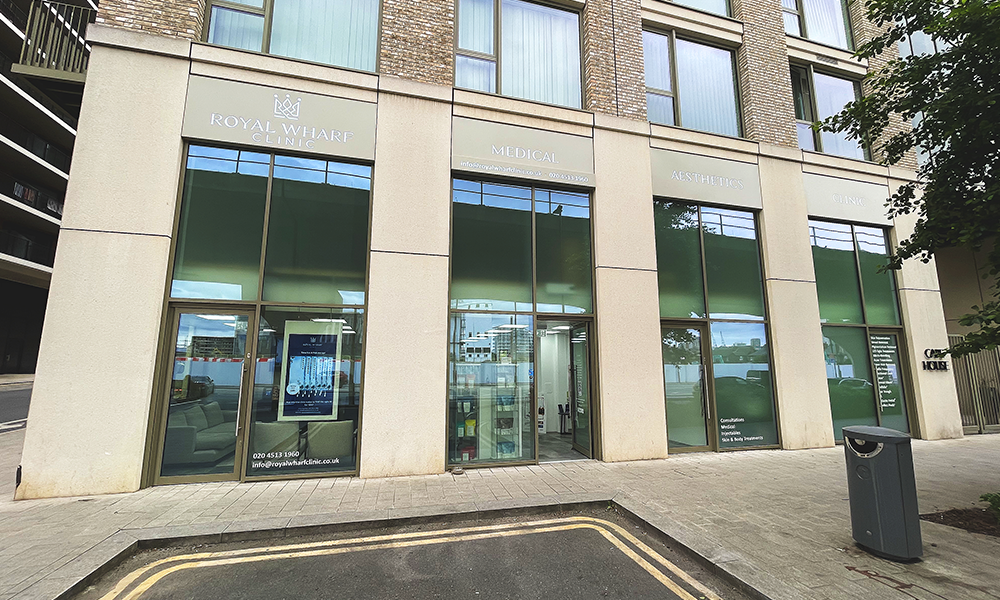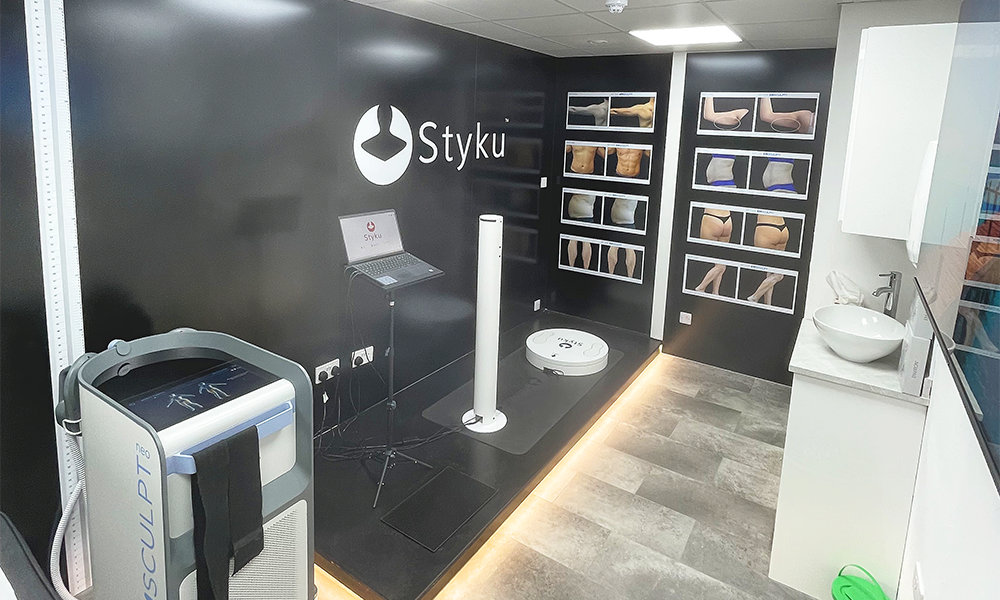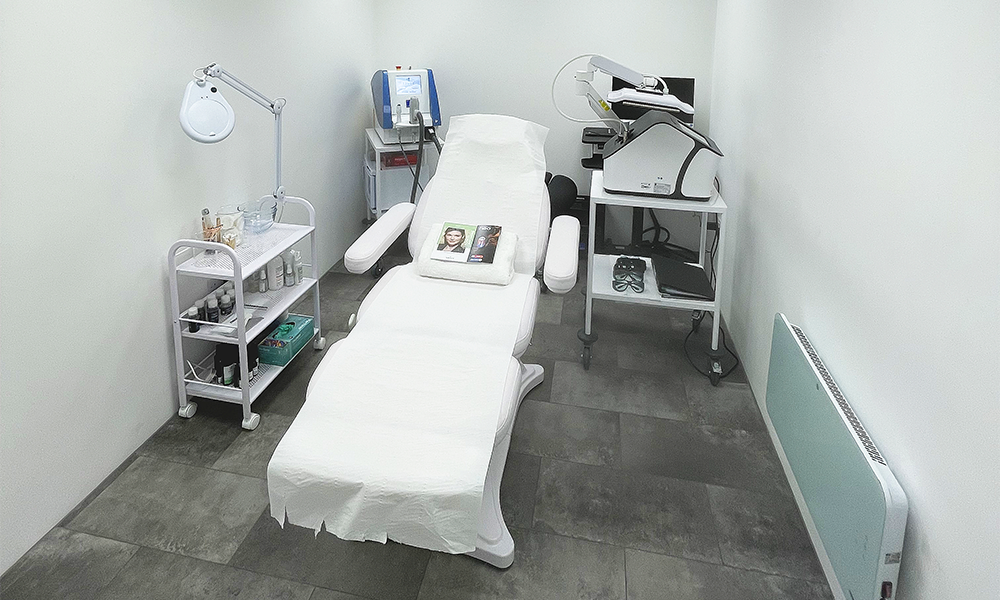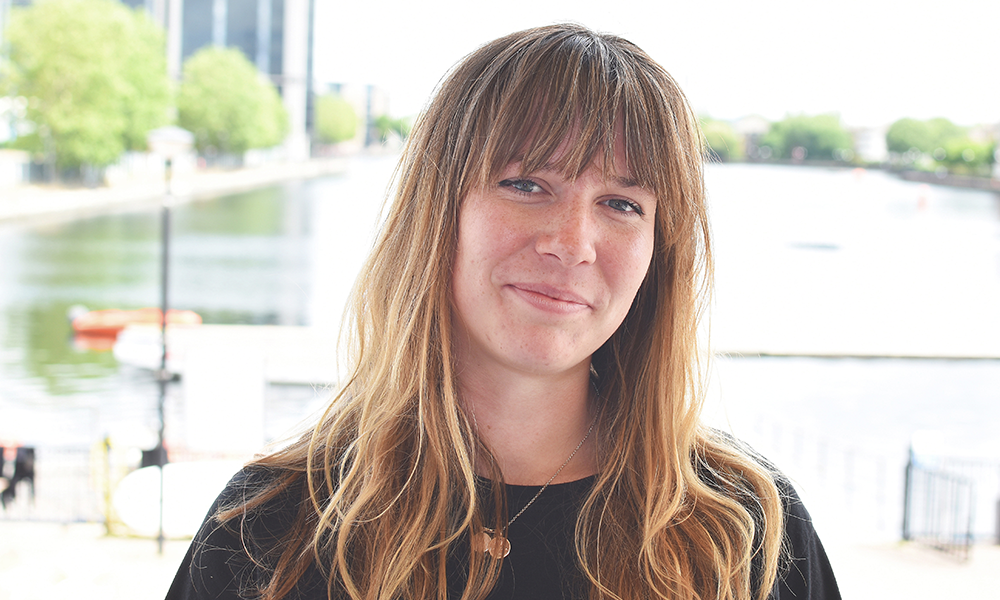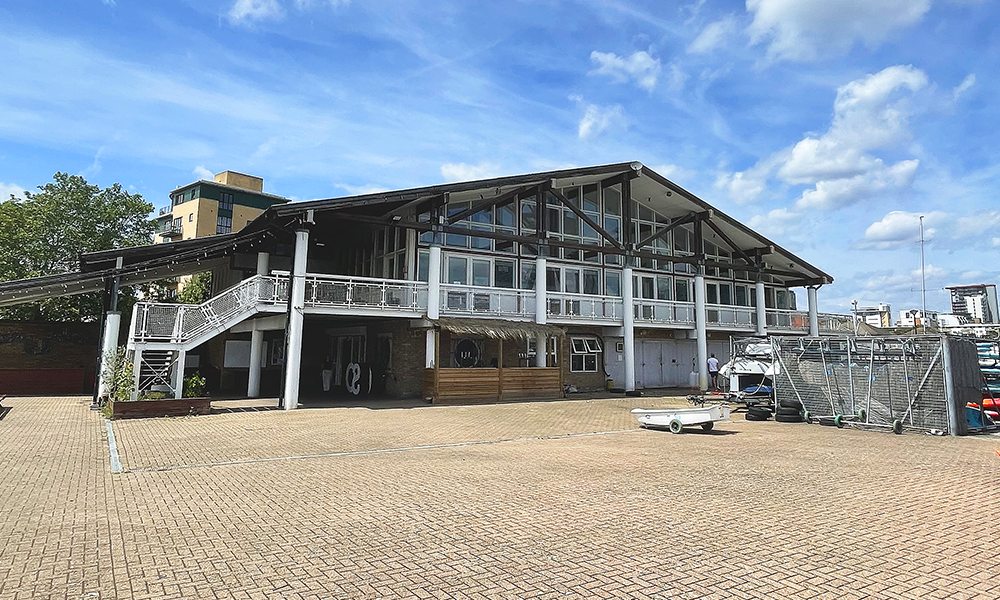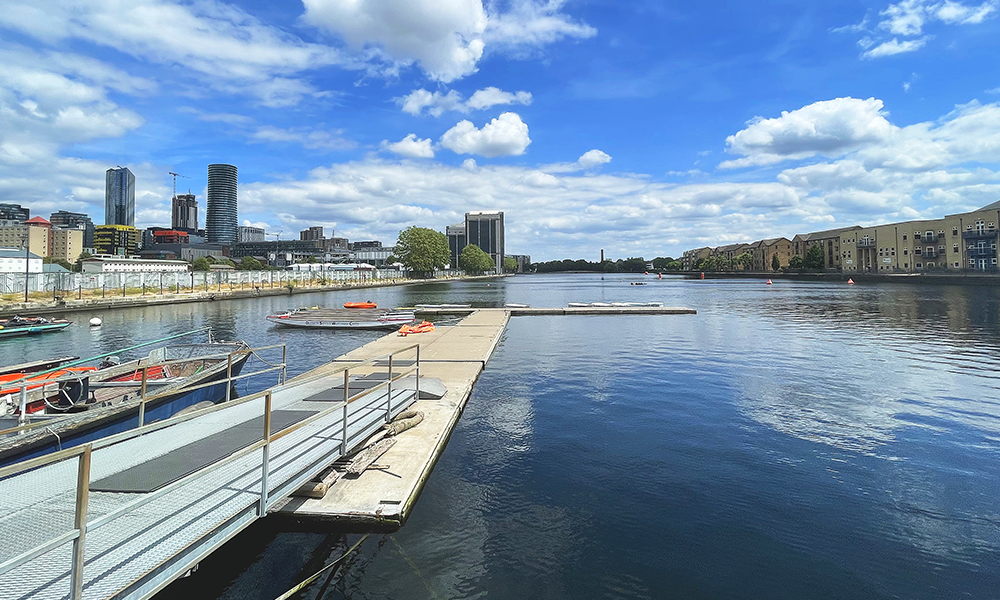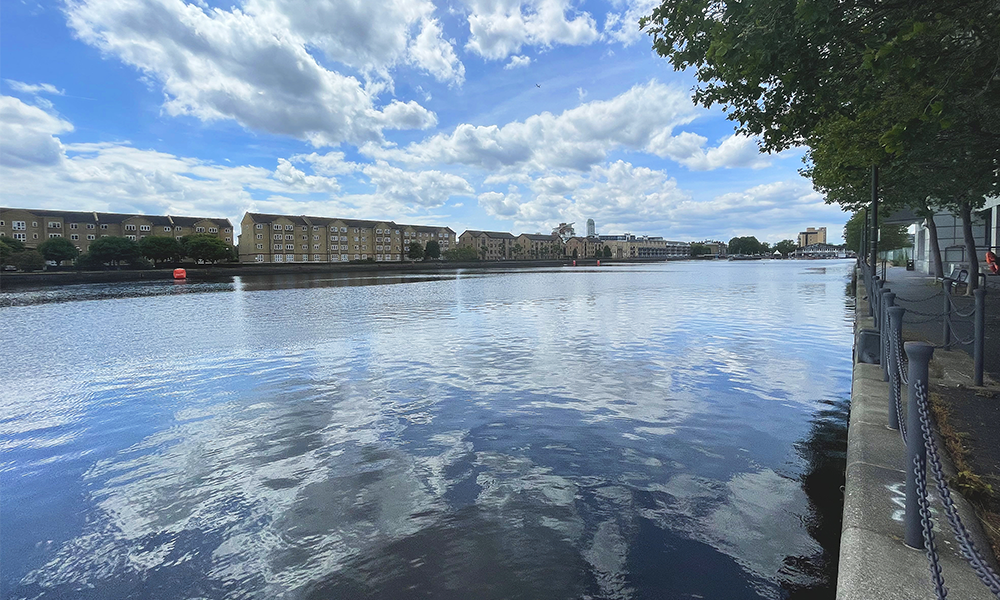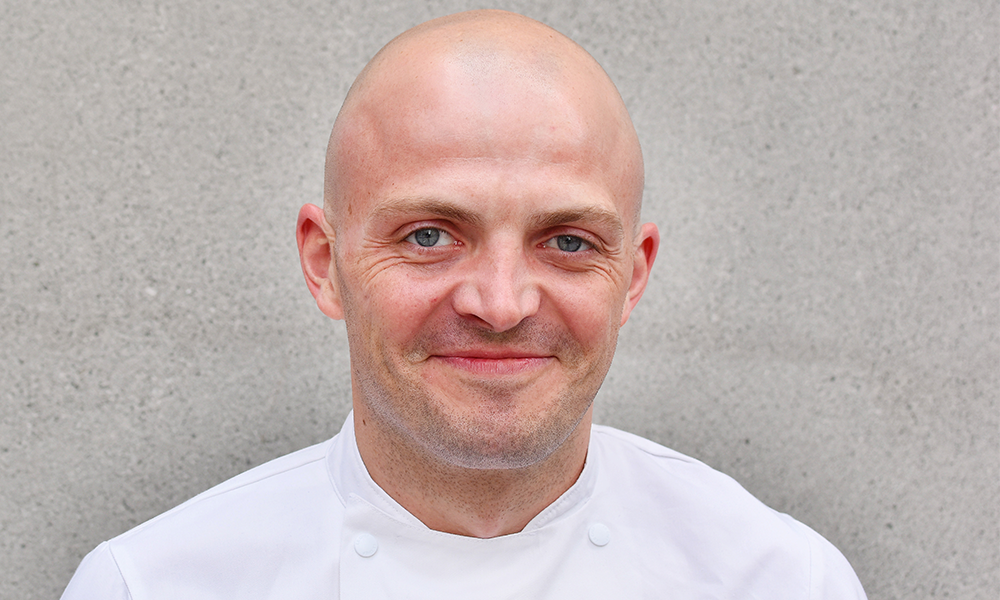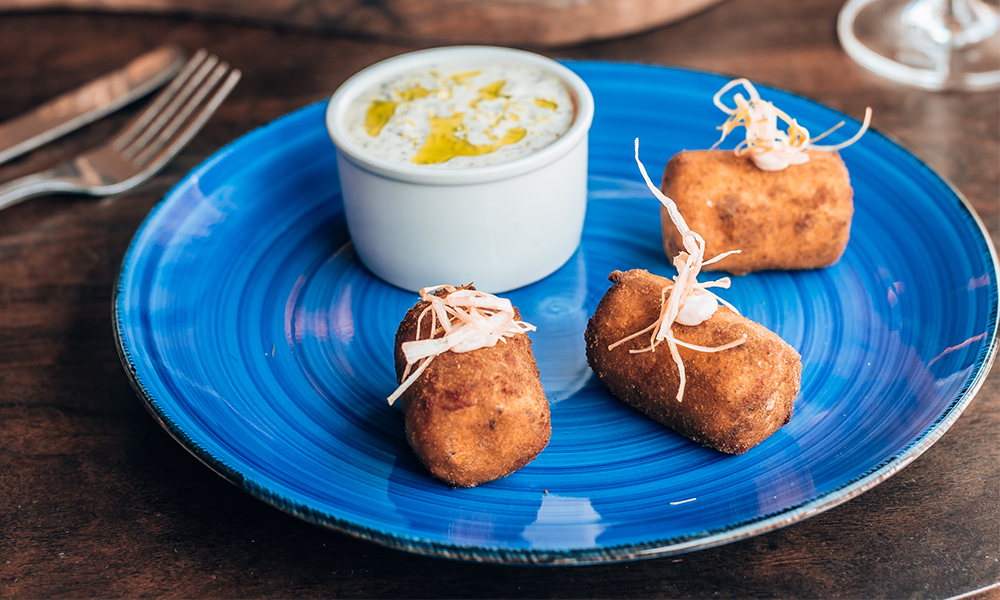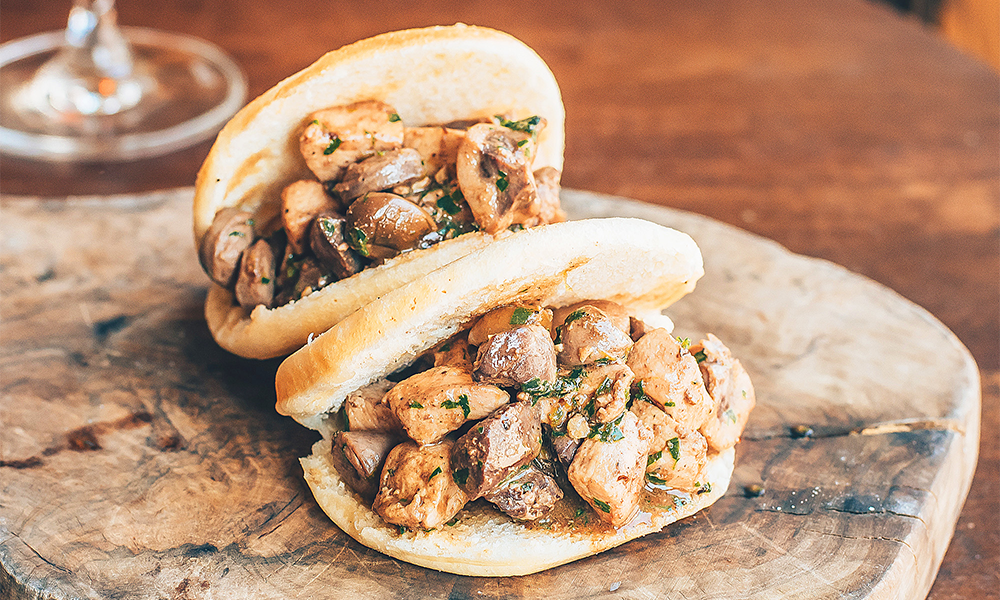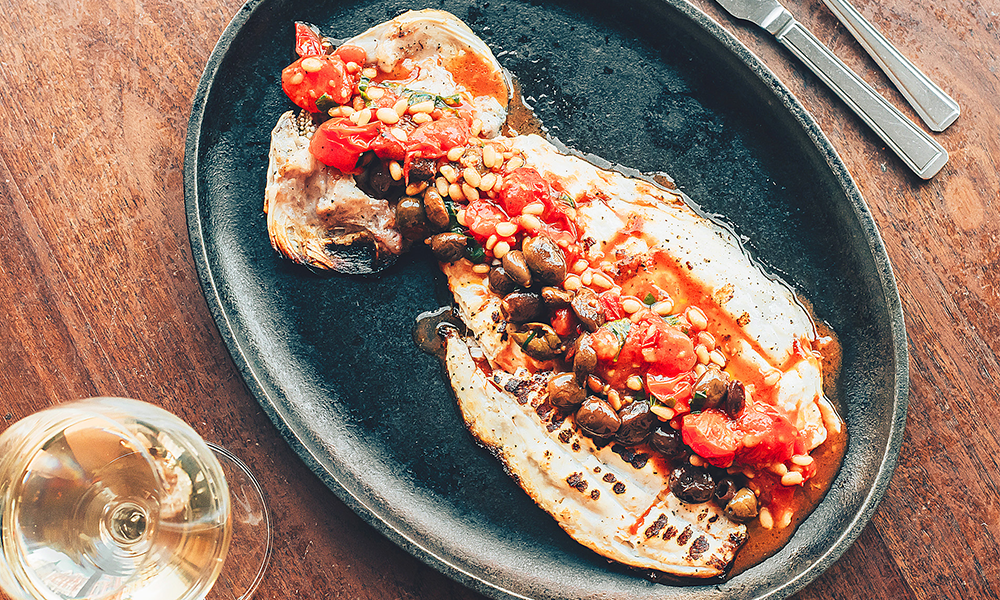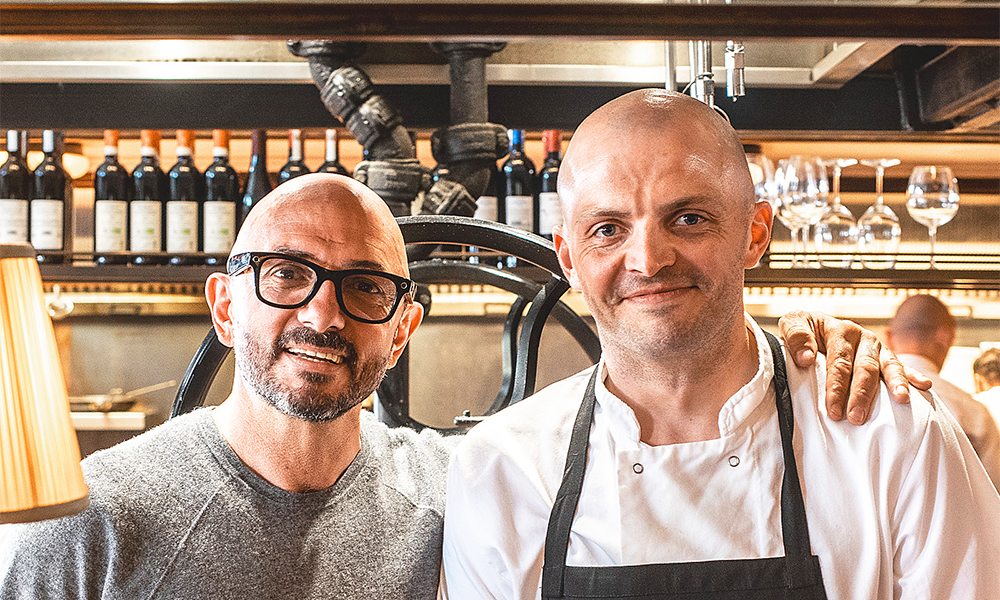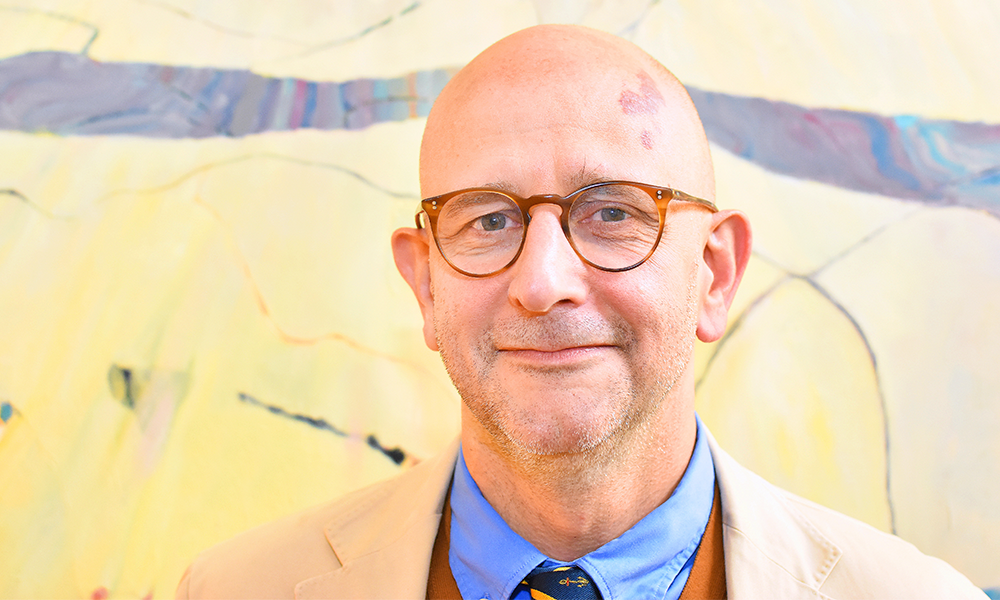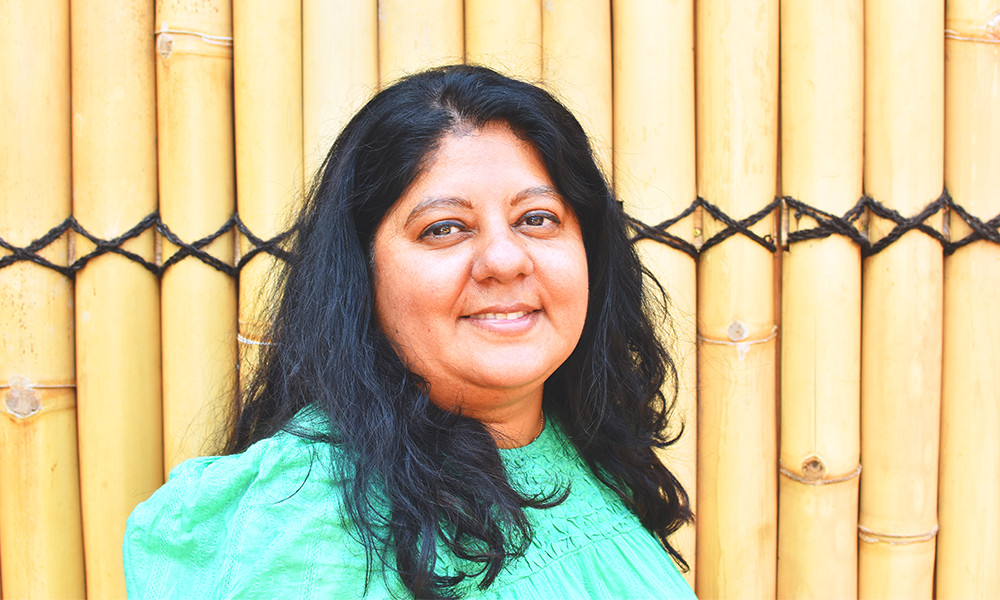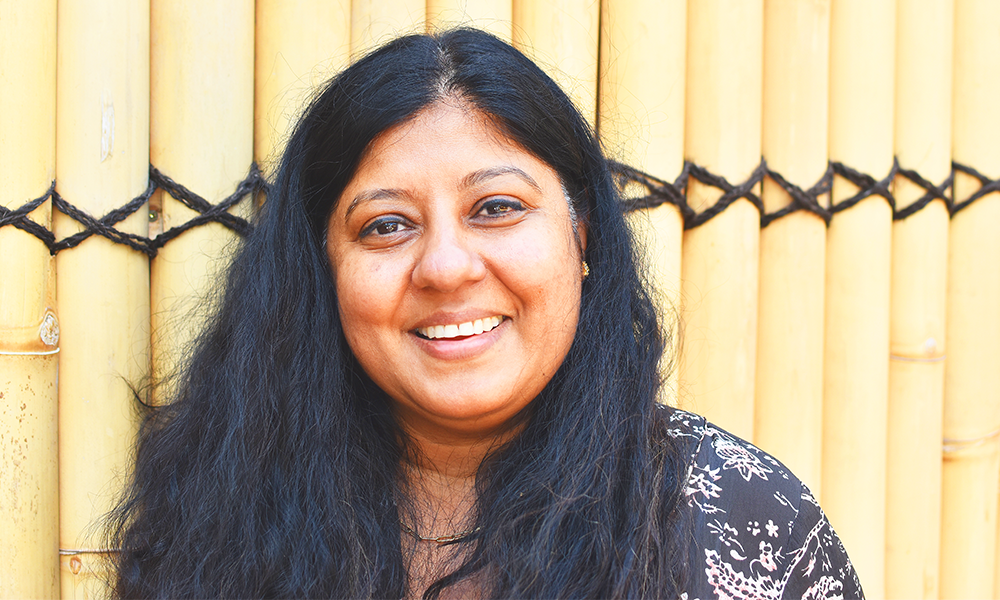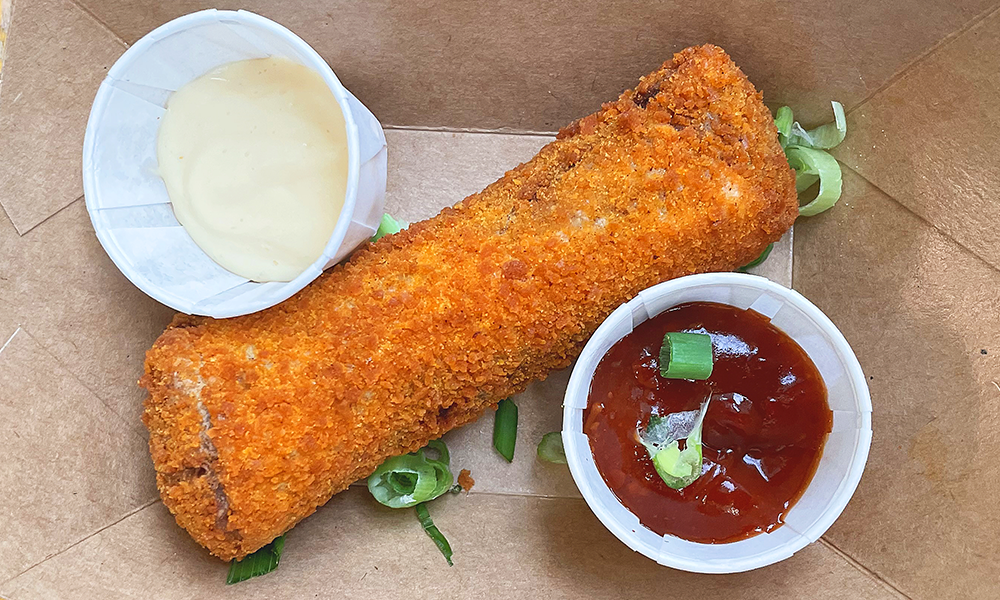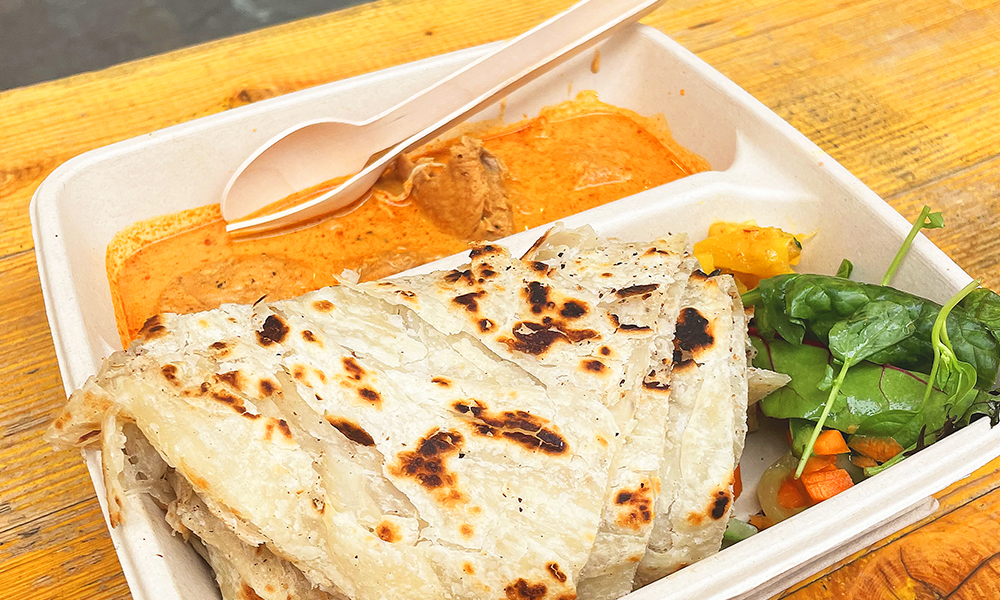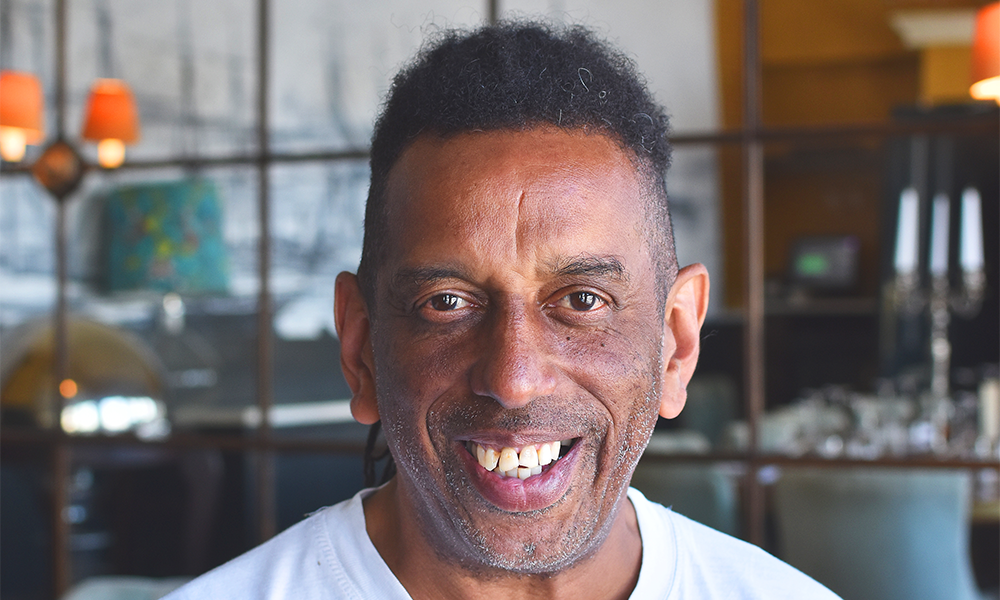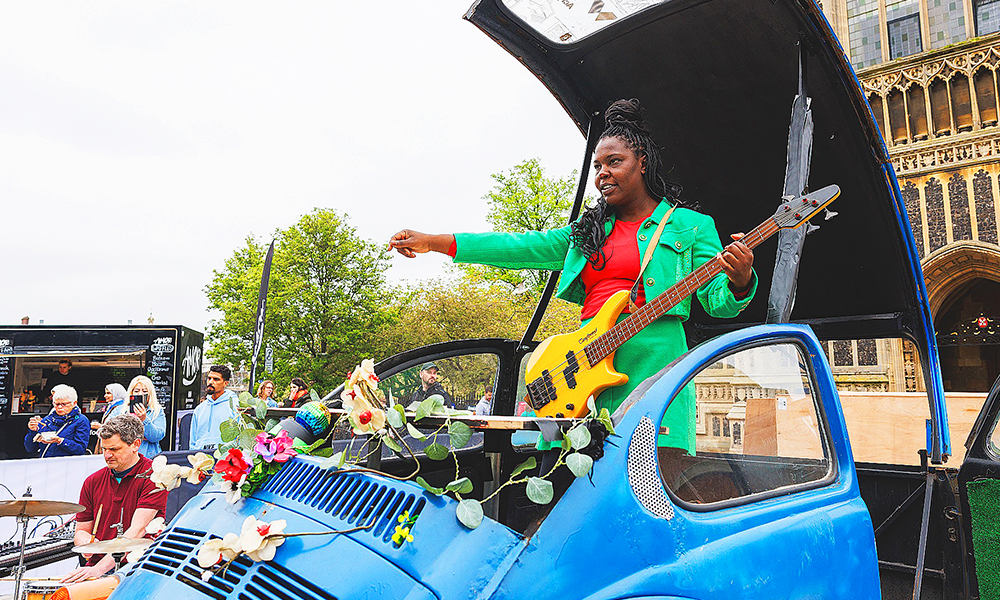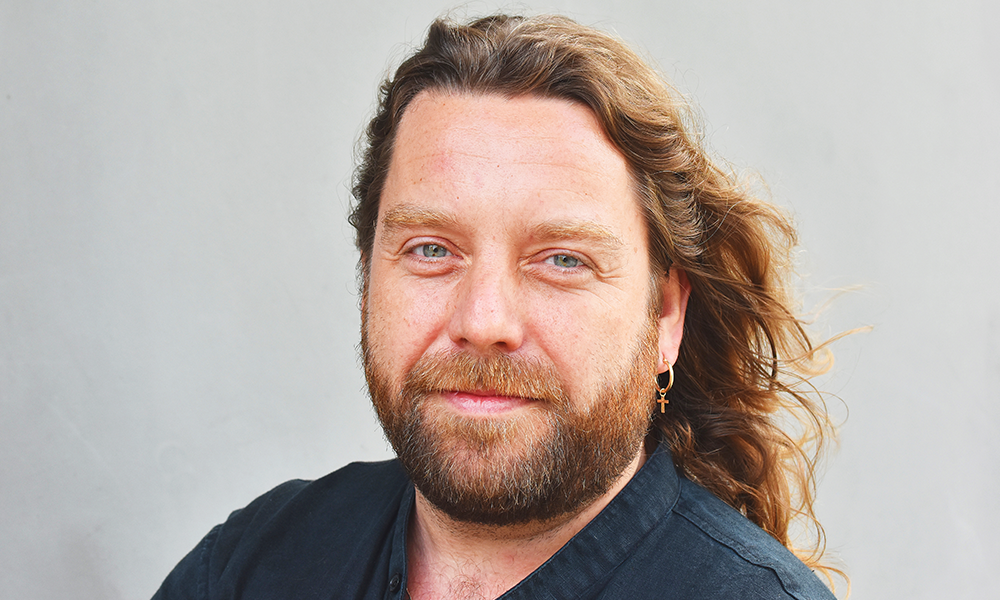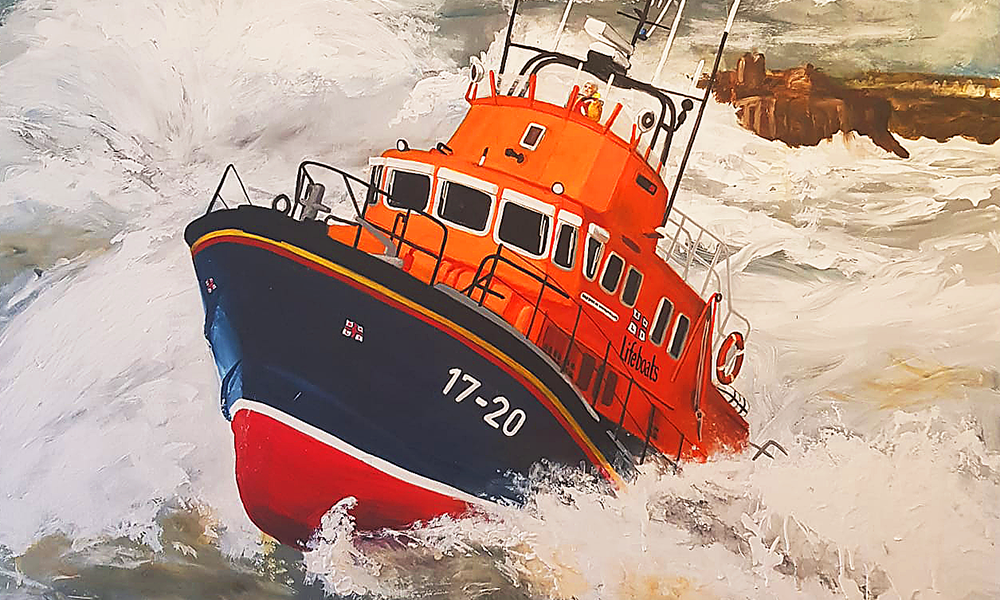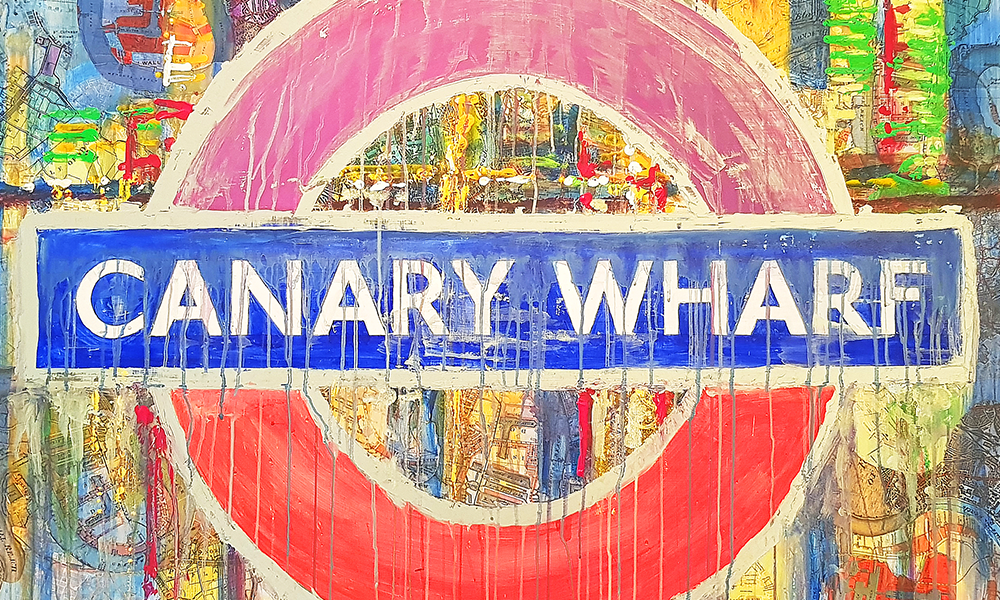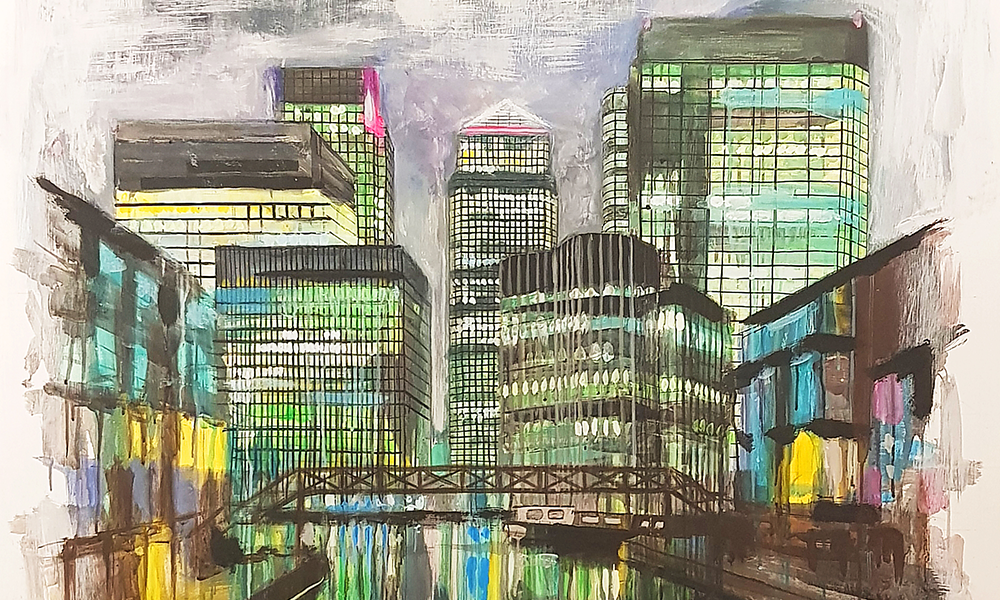CEO and founder of the charity and social enterprise Turly Humphreys talks aspiration
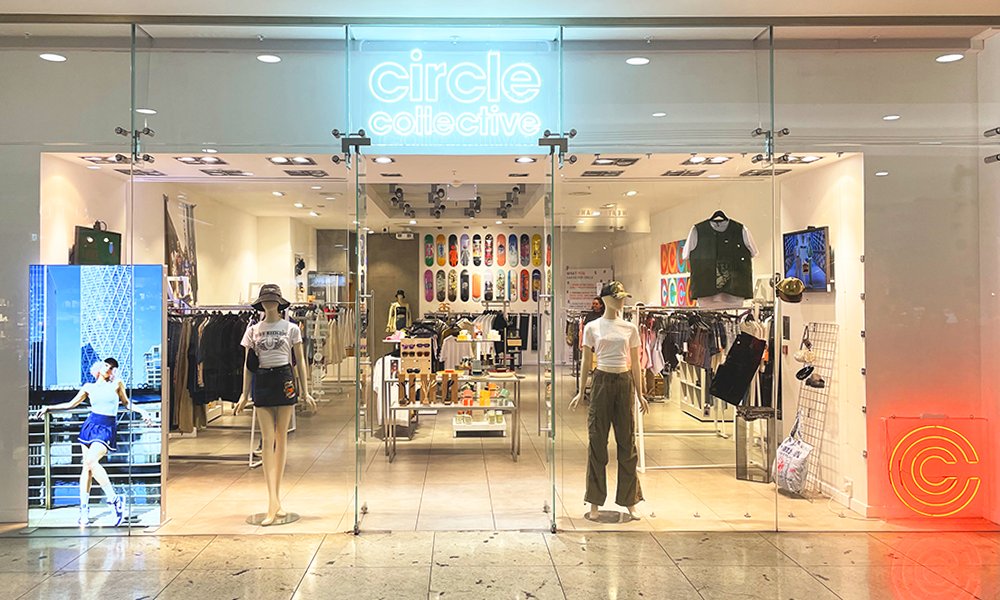
Subscribe to our Wharf Whispers newsletter here
‘Intensely practical’ is the best way to describe Circle Collective.
Sure, to people strolling through Jubilee Place it’s a striking shop filled with neon, skateboards and the kind of clothing you don’t really see elsewhere in Canary Wharf.
Aside from the inventory, a chic customer picking up a new look will likely not find too much different in the retail experience.
Knowledgeable, youthful staff will be on hand to offer information on the products and then collect payment at the till – pretty much like any other store on the estate.
But Circle Collective isn’t like any other shop on the Wharf.
It’s the public facing tip of a much larger mission that the customer will, wittingly or unwittingly, have played a role in.
Go behind the scenes and you’ll find a vast space dedicated not to stock, but to skills.
That’s because the shop is a social enterprise that exists in symbiosis with a charity of the same name, entirely dedicated to giving young people work experience and finding them employment.
Having recently opened its third dual site at Canary Wharf, founder and CEO Turly Humphreys said it would be impossible to have one without the other.
“It’s two organisations that have to work together,” she said.
“A lot of organisations have asked whether you need both because they are usually only interested in the training.
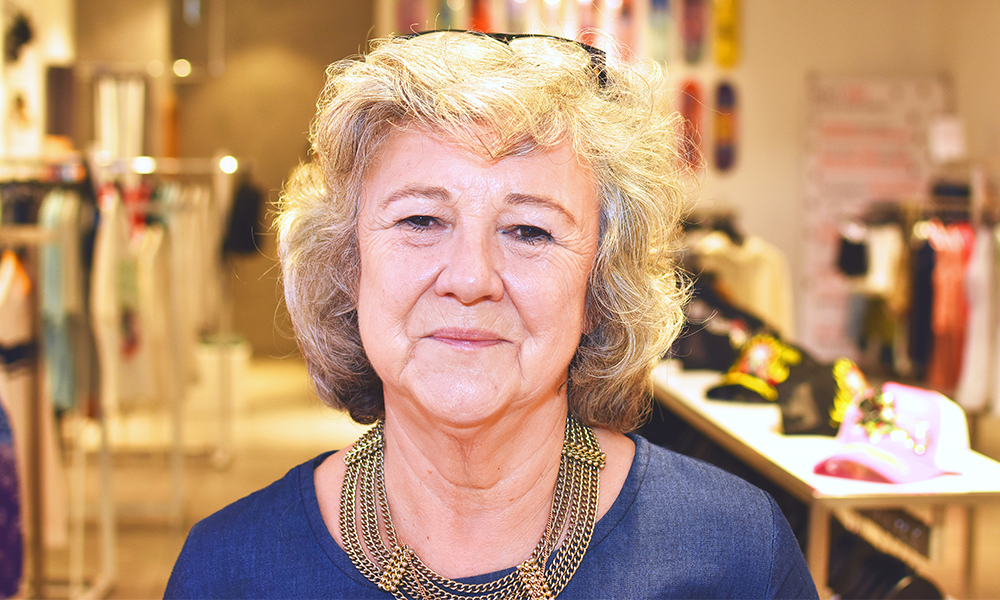
“But the magic of what we do is that we do an employability course and it’s wrap-around. Participants get real work experience related to all aspects of the shop alongside mentoring and really practical information about things like how to do an interview and write a CV.
“We work with corporate partners and take them into workplaces so they can see a real working environment. We get them ready for that, building confidence and resilience.
“It’s about constantly pumping them with sensible information and, when necessary, telling them some really strong home truths – that the bus wasn’t late, they were.
“This is not volunteering – their shifts in the shop are treated like a job. If they come in and they’re not on time, for example, then they’re taken to one side and the implications are explained to them.
“That might be an increased risk of shoplifting because we’re short-staffed, which is obviously not acceptable.”
Circle’s focus is on preparing young people for the realities of work and then supporting them into paid, permanent employment with its programmes typically lasting between five and eight weeks.
So far, it’s helped more than 1,000 into jobs in myriad fields.
Turly said: “We believe that any young person who wants to work deserves a job.
“We’re generalists – we’ll take any young person aged 16-25 who wants to work and is eligible to do so – recruiting them through job centres, social media and walk-ins.
“They can’t be in education or training but we welcome people straight from school alongside graduates from university.
“They might be refugees or neuro-diverse – we’ll work with anyone.
“Then they become a peer group, work together and support each other.
“My aim for Canary Wharf is to match the people on our programmes to vacancies on the estate.
“That will be a challenge because there are lots of companies here and those jobs are not all gathered at a single point, so we need to collaborate with HR departments and businesses so they can understand the benefit of hiring from a diverse pool of people who want to work.
“It’s about companies realising that there’s a real benefit to diversity and that you can hire people for many jobs such as front-of-house in hospitality without them needing three years of experience.”
Turly started the charity and social enterprise after being inspired by her son’s sporting activities – initially looking at that as a way to help young people.
“He was 16 and a sports scholar at the time – playing cricket, rugby and football all around the country,” she said.
“Once young people were on the pitch, it didn’t matter what anybody’s background was.
“So I started by trying to get more people into sport, but then I went to a job centre and saw how disillusioned the young people were – the lack of ambition they had.
“It was so sad because they never expected to do better than their parents – to own a house, for example.
“I come from a commercial background and I’ve always run my own business. I had a flagship store for corporate printing in the Strand, then I had a studio in Tottenham Court Road.
“I looked at those young people in the job centre and thought: ‘This isn’t rocket science’.
“I got some of them into the shop, some of them into the office and, out of those first nine recruits, I got seven of them into work.
“I’m still in touch with them today.
“One lad’s father was a farmer and there wasn’t enough for another income on the farm, so I got him a job as a welder, which was perfect.
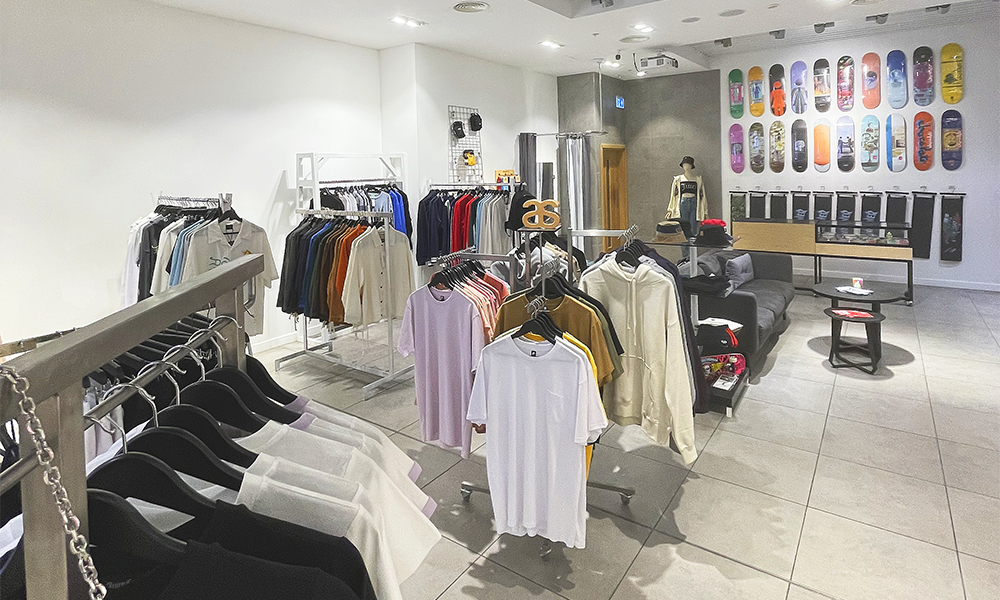
“Then there was a lovely girl who had hearing problems.
“I managed to send her on an away week and she came back much more confident. She’s been running a big bingo hall now for years.
“None of it was especially complicated – it was all about being practical. That’s the ethos we still run Circle Collective with.
“I work on partnering with the corporates and run the shop and we have Matthew Lewendon who has a charity background and is our director of operations who handles the charity – it just works.”
Circle’s Back Your Future programme is very much tailored to individuals and features one-to-one mentoring sessions, work experience in the shop, motivational workshops, a chance to meet employers and access to job vacancies.
“But it’s more than that – once brought into the fold, the charity offers ongoing support to those it finds jobs for as long as they need it to ensure everything is going to plan.
“The aim is that participants feel they belong to a community they can rely on.
“First we sit down with them and find out if they have any barriers to work and to identify any transferable skills they have – which many do,” said Turly.
“So they start off with the charity and then they have an induction on the shop floor, where health and safety and safeguarding is explained to them.
“They get a sheet with a list of things we teach them and on the first day they’re taught cash handling and taking credit cards, at the till.
“Then they’re taught how to approach customers and learn product knowledge – they may have to go and research that.
“When they first come to us and say that they want to work in a shop or in an office – it’s our job to teach them about all the different sectors and how they might find roles within them.
“We use the shop to give them experience in relevant areas.
“If somebody’s creative, for example, we often get them involved in merchandising – we aim to use the skills the young people have got, whether it’s handling websites or using their creativity.
“One girl we had came from prison and she’s now doing merchandising in Primark, which is exactly what she wanted to do.
“Then I’ve got a lad who was a refugee, hardly spoke English and was homeless – he’s now a chartered accountant.
“We have a graduation every year and you can’t bottle the atmosphere.
“The young people come back, get a certificate and they all do a fashion show.
“The corporate supporters come and everybody’s in tears.
“At first nobody wants to talk, but then someone grabs a microphone and they all thank everybody.
“It’s wonderful. It’s about getting people into work, but it’s so much more than that.”
Circle needs both funding to continue its work and a larger pipeline of corporate partners to help it find roles for the young people it supports.
“The people who come to us often have a lack of career advice, work experience or role models and may also be suffering from anxiety and mental health issues,” said Turly.
“There’s also a lack of awareness of the realities of work, which is why it’s so important to take them into workplaces where they can hear from people doing the jobs.”
Turly said Circle would love to hear from businesses locally who can help with similar visits or provide entry level jobs in and around Canary Wharf.
The organisation is also looking for sponsors to help it continue its work.
The other aspect to Circle that is of benefit to Wharfers is the shop itself, with all profits fed back into the charity.
“It’s thanks to Emma Warden and Jane Hollinshead at Canary Wharf Group that we’ve been able to open here.” said Turly.
“The shop is like bringing Shoreditch to Jubilee Place – we stock a mixture of retro brands and vintage clothing including some high-end pieces from labels like Burberry.
“One of our trainees asked if we could do skateboards so we wrote a business plan and I gave him £200, which he turned into £400.
“Now everyone who comes on our programme is taught how to build a skateboard. We’re not a specialist skate shop but we do sell boards and if people need their bearings fixed then they can come in.
“We also have a lot of skate clothes that people can buy and four of our staff are skaters.
“We also stock products that are locally made and would like to find more makers who want to sell through us.
“What we say to buyers is that when they shop with us in store or online, they are really supporting the community.
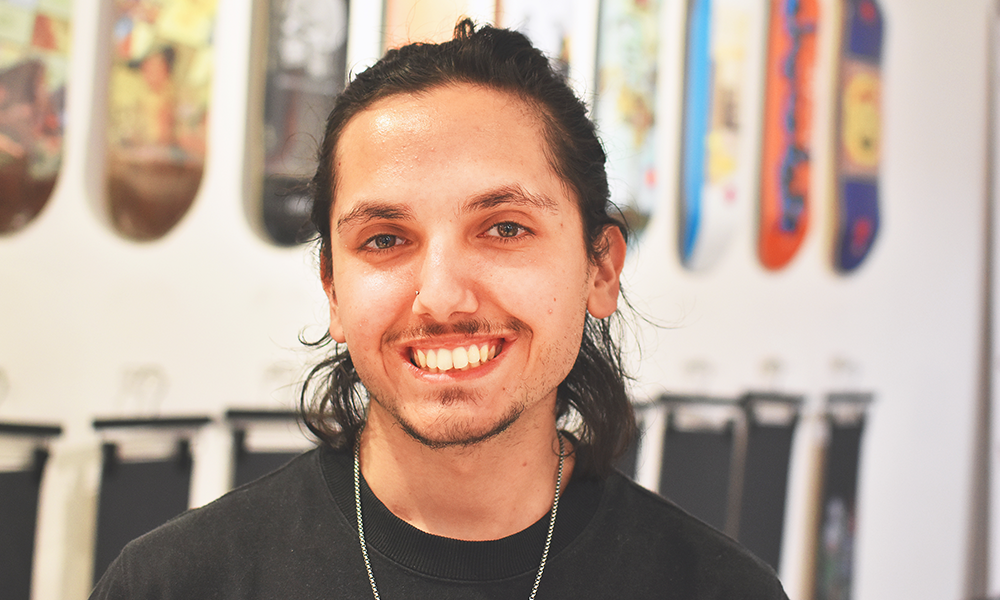
CASE STUDY – Alex Emerson-Arfstrom
There’s a real sense when you visit Circle Collective that people who wind up in its orbit keep coming back for more.
Alex Emerson-Arfstrom is a good example – finding his way onto one of its programmes and then returning to work part-time at the organisation while studying.
He said: “When I left college I was looking for work.
“I took a gap year, but the catch was I didn’t have much experience on my CV outside of projects – I didn’t have any work experience.
“My friends referred me to a place called Circle Collective and I started off as a trainee on its Back Your Future programme.
“I was there for about two months, getting some basic retail experience in the Dalston store.
“I was born in Haringey – I’ve lived there my whole life.
“Then I received a job offer, but this was the place I wanted to be, so I’ve been here for six months on a kickstart scheme, training people like myself and using the skills I had learned.
“I was inspired by the training and became a supervisor myself, to train young people.
“I was working part-time and then I got into university to study cyber security. It’s way more than just working in a shop.
“There are so many opportunities we can give young people.
“They can shadow the staff here and build their skills – there are so many areas to get involved with – administration, IT and customer service.
“I’ve been here for about two years now, and it’s very rewarding when people get jobs – they’ve done their training, get employment and come back and talk to me about how they feel.
“I do keep in contact with a lot of them and seeing their confidence grow over time is amazing.
“I wasn’t the most confident person at the beginning.
“My preconception was that it was going to be very structured, but it was a much wider spectrum of things I was taught.
“On my second day I was helping to create a social media project, and then I was going out to stores, talking to people.
“There’s such a wide range of things to get involved with.
“I’ve gained more skills than I can count from Circle.
“It gave me the opportunity to do some really great IT work – hands-on experience. It’s been great that they have shown that trust in me.
“I’d always been a creative person and the programme allowed me to spend time working with social media and that turned into managing websites, setting up deals with brands and designing things on the IT side.
“While I’d always had an interest in cyber security before I came to Circle Collective, what the organisation has done is allowed me to develop those skills such as managing its website.
“I’m not sure what I will do in the future but it will be within the cyber security sector – it’s such a broad area.”
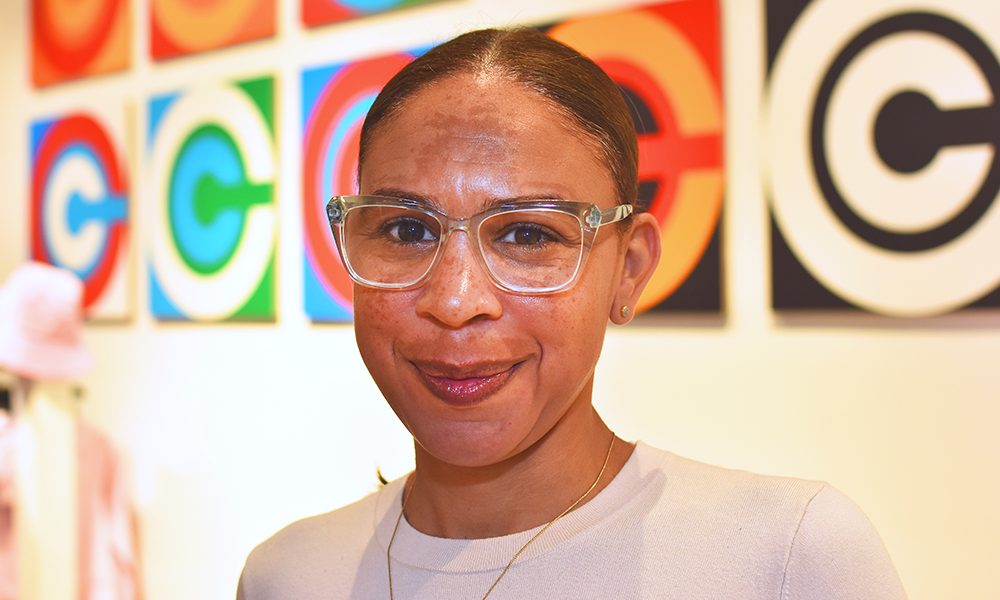
STAFF SPOT – Angela Brown
“I’m the partnership manager at Circle Collective,” said Angela Brown.
“As an organisation we can educate, encourage, support and create some fantastic fresh talent for an organisation.
“At present we have a particular focus on equality, diversity and disability and how corporates can embed that within their operations.
“At present, we feel businesses are doing it but maybe not as authentically as they could be.
“For example, we’re currently working with Landsec who will be taking on young people as kickstarters.
“I’m working with them to ensure that those young people are understood and supported by their managers as businesses are often used to graduates or people who come from a certain background.
“It’s really important that everyone is talking the same language so the young people have a chance to shine.
“I’ve been with Circle Collective for five years and am currently training as a therapist which I feel plays into my current role.
“There’s a therapeutic element to what we do and I think young people need that kind of support to take the pressure off their coaches.”
Read More: Why there’s only weeks left to see Punchdrunk’s The Burnt city
Read Wharf Life’s e-edition here
Subscribe to our Wharf Whispers newsletter here
- Jon Massey is co-founder and editorial director of Wharf Life and writes about a wide range of subjects in Canary Wharf, Docklands and east London - contact via jon.massey@wharf-life.com




